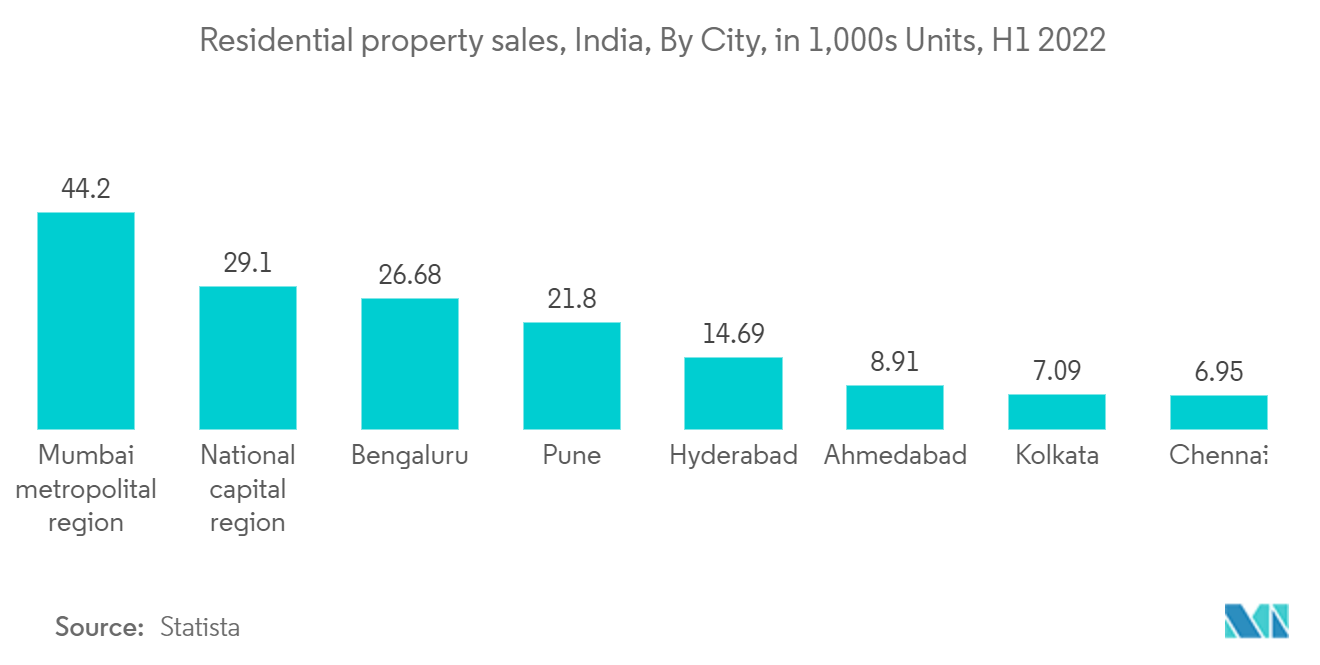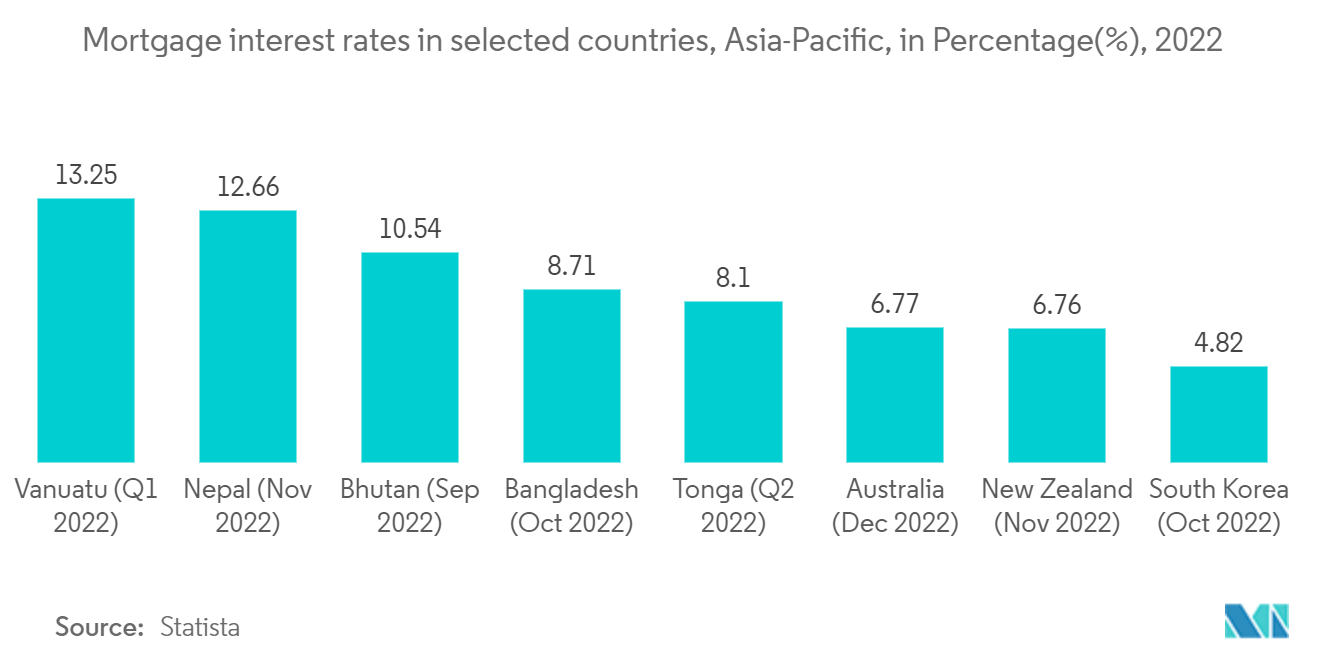Market Trends of Asia-Pacific Prefabricated Housing Industry
This section covers the major market trends shaping the APAC Prefabricated Housing Market according to our research experts:
Increasing Demand for Housing Driving the Market
Housing markets in the Asia-Pacific region may be at a crossroads. Housing booms that were prevalent before and during the pandemic may be about to reverse amid stretched housing price valuations and rising interest rates after experiencing frequent and pronounced housing cycles over the past decades. Housing market developments are critical for households and policymakers at the current macroeconomic juncture because housing is the single most important household asset, and mortgages account for a large portion of household liabilities. Housing busts can have a significant impact on the health of economies and household livelihoods. And, while some housing markets have seen rapid price increases for an extended period, increasingly wealthy housing price valuations have priced out many low-income households. The ongoing rise in mortgage rates in many countries will likely exacerbate affordability concerns.
Government policies can be a good predictor of future growth. For example, Chinese and Hong Kong policies are now supporting the housing sector to increase supply and relieve housing cost pressures. The Chinese government has also been largely supportive of the development of e-commerce. These policies, in our opinion, have the potential to accelerate growth in logistics and multifamily real estate. On the private side, it appears that there are still some opportunities to develop industrial logistics in prime Chinese markets at an estimated 7-8% cost yield, which provides a good buffer for riding out the cycles. Demand for multifamily housing appears to be strong as well, with positive rental growth and development margins. While industrial logistics and multifamily housing remain largely attractive sectors in Asia-Pacific, construction and operating costs are nonetheless rising across the board; thus, investors may wish to avoid long-term fixed leases where revenues are capped.

Ease of Construction and Low Cost Driving the Market
The housing sector has remained a bright spot in the Asia-Pacific region over the last two years. Because of low interest rates and a shift in housing preferences toward larger homes, there has been an increase in demand for new constructions and home improvements. However, as interest rates rise and inflation rises, the residential sector is expected to bear the brunt of the impact in short to medium term. The crisis engulfing Australia's construction sector worsened in Q2 2022. Many companies went into administration or liquidation because they owed millions of dollars to suppliers and subcontractors.
China's 'dual carbon' goals (also known as the 30-60 targets: 2030 carbon peak and 2060 carbon neutral) have the potential to provide significant growth opportunities for the Chinese construction sector. Reduced carbon emissions in the construction sector are critical to China's carbon peak and neutrality targets. Green and dual carbon technologies can also provide significant value-added benefits to the construction industry. The construction industry relies heavily on government policy to reduce carbon emissions. Digital transformation is a major driving force in China's construction industry reform. Leaders believed that digitalization was required to improve efficiency, lower costs, and keep up with the times. While larger organizations have made significant progress in adopting digital tools and practices, small and medium-sized businesses have not. Building information modeling and model-centric working are needed to improve productivity and decision-making.
The popularity of modular construction varies greatly across the world, whether in the form of 2-D panels that require on-site assembly or fully constructed 3-D units built in off-site factories. In some places, such as the United States, adoption is still in its early stages, whereas in others, such as Scandinavia and Japan, modular construction is well established. The primary drivers are labor dynamics, specifically construction labor shortages and persistently high housing demand. Following these are determining factors such as local site constraints, supply chain and logistics, quality perception, material access, and regulations.

